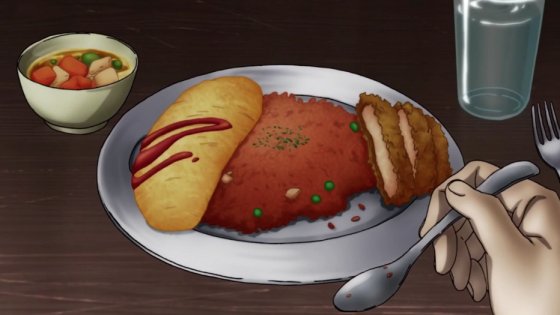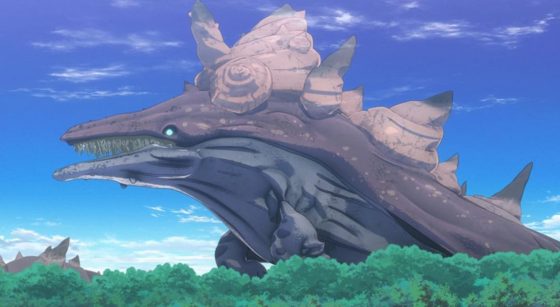
Japan has long had a complicated relationship with hunting animals and eating meat with deep implications and intersections within Japanese society that reach far beyond food culture into politics, religion, and even modern popular media like video games and anime. Today we’ll be exploring a bit of this relationship between Japanese people and animals across time as well as how certain ideas and attitudes have been expressed in contemporary pop culture. Let’s dig in!
A Brief History of Japanese Hunting and Meat Consumption
Hunting and meat-eating were an important part of Japan’s earliest societies in the prehistoric Jomon period as far back as 14000 BC. Jomon people are believed to have raised hunting dogs, created numerous pit traps, and used bows and arrows to hunt animals like wildfowl, deer, boar, and occasionally bears, and were also skilled fishermen. Hunting, and later animal herding and farming, remained a part of Japanese societies well after the pivot towards agriculture thousands of years later and animals like oxen and wildfowl were sometimes sacrificed to gods in prayers for good weather and strong harvests.
The introduction of Buddhism from the Korean Kingdom of Baekje in the mid-6th-century brought about substantial changes to Japanese society and its belief in reincarnation meant that adherents should avoid killing animals as they might be reincarnations of their own ancestors. This became codified into law in 675 AD by Emperor Tenmu, although it was not all-encompassing and only applied to cows, horses, dogs, monkeys, and chickens and only between April and September (farming season). Succeeding emperors had to repeatedly reinforce the law, indicating that it was sometimes ignored, but the belief that meat was spiritually unclean, as opposed to the sacredness of rice and rice products like mochi and sake that were now used in offerings to the gods, took hold among the public after the initial law, along with many other superstitions like meat causing blindness that could spread to others.

Over time, all meat-eating largely became a year-round cultural taboo with a notable exception being in areas where Christian missionaries and converted lords in Kyushu and the Yamaguchi region of Honshu enjoyed beef and pork dishes, along with other food introduced to them by the foreigners.
However, during the Edo Period, the prohibition of meat (and Christianity) reached its height, requiring anyone who ate meat to publicly repent and fast for many days depending on what animal they had ate, although there were still some loopholes including a special “venison permit” talisman from Suwa-taisha shrines in Nagano that allowed you to hunt and eat deer. Surprisingly, meat was also sometimes used as a kind of medicine in some circumstances, giving it a bit of a positive supernatural quality as well in Japanese society, perhaps calling back to earlier beliefs of its association with the divine. It’s also worth noting that certain animals like deer and wild boars weren’t really considered animals but put in the same category as fish, sometimes called the “whales of the mountain” (whales were also considered fish and not banned) or even given plant names like “peony” and “maple”, although those may have mostly been euphemisms.
Modern Hunting and Food Culture in Japan
Attitudes towards meat-eating didn't begin to change much again until the Westernization of Japan in the Meiji restoration but this didn’t happen without resistance. After the Meiji Emperor Mutsuhito ate meat during the New Year celebration of 1872, a group of Buddhist monks who believed meat-eating would destroy the soul of Japan attempted to break into the Imperial Palace, but after nearly 1200 years, the ban was finally lifted, eventually leading to a plethora of meat-based Japanese cuisine like tonkatsu, sukiyaki, and yakitori as well as the embrace of foreign meat dishes that are enjoyed today.
Hunting, however, has become much rarer, largely thanks to Japan’s extremely strict firearm laws and other restrictions that make the process of getting a hunting rifle complicated, expensive, and take at least a decade. This, along with the extinction of Japanese wolves, has caused deer and some other animals to become overpopulated to dangerous levels that harm the natural environment even further.
Anime x Hunter - Meat in Media

So how does modern pop culture like anime fit into all of this? To start off, there are obviously hundreds of manga and anime about cooking, many of which prominently feature meat like Shokugeki no Souma (Food Wars!), and even some series about realistic hunting in Japan like Okamoto Kentaro's Sanzoku Diary manga but, arguably, the most interesting things in the otaku world involving this subject bring hunting into imaginative fictional worlds.
There seems to be a somewhat bizarre fascination with eating monsters as of late, particularly in series like Kuutei Dragons (Drifting Dragons) which basically follows a crew of steampunk whalers hunting giant dragons for both food and fuel from their airship as well as the currently airing Deca-Dence which similarly has people battling monstrous creatures to survive and power the giant titular fortress, processing the strange Gadoll into food and liquid fuel. This is also the main focus of the popular manga Dungeon Meshi (Delicious in Dungeon) which explores monster eating in a Dungeons & Dragons-esque fantasy setting; not to mention Capcom’s best-selling Monster Hunter game franchise.
Does this fixation on monster meat call back to old traditions of hunting now largely suppressed in modern society or an artificial continuation of Japan’s meat cuisine expansion of the Meiji era? Perhaps. A reflection of the country’s current controversial whaling practices? Arguably yes, at least in Kuutei Dragons’ case. Regardless, it certainly appears to be an aspect of many popular series nowadays as part of the overarching obsession with food prevalent in contemporary Japanese culture.
Final Thoughts
Altogether, Japan’s complicated history with hunting and eating meat has influenced the nation’s culture in innumerable ways, giving rise to alternative sources of umami flavor like seaweed and other distinct aspects of Japanese food present in even originally foreign-derived dishes. More recently, it has also given us fantastic visions of things like dragon fillets as well as good ol’ manga meat on a bone. While Japan is arguably still more of a seafood-centric society, the role of hunting and meat should not be understated as part of Japanese culture with the former perhaps becoming more important as a way to combat environmental imbalance.
In any case, we hope you enjoyed this article and let us know what you think yourself in the comments section below! Be sure to stick around Honey’s Anime for more explorations of Japanese culture and much much more. Until next time, stay hungry!

